Abstract
Using a computer-controlled torque motor and manipulandum, 50 ms torque pulses and 70 second trains of binary pseudorandom torque disturbances were applied to the wrists of 10 adult controls and 22 patients with essential tremor in order to study the interaction between mechanically-induced stretch-reflex oscillations and essential tremor. These two oscillations were separated by applying inertial and spring loads to the wrist. There was no evidence of increased or unstable stretch-reflex activity in the essential tremor patients, and stretch-reflex latencies did not correlate with the frequency of essential tremor. Essential tremor and mechanically-induced stretch-reflex oscillations are separate phenomena capable of complex interaction.
Full text
PDF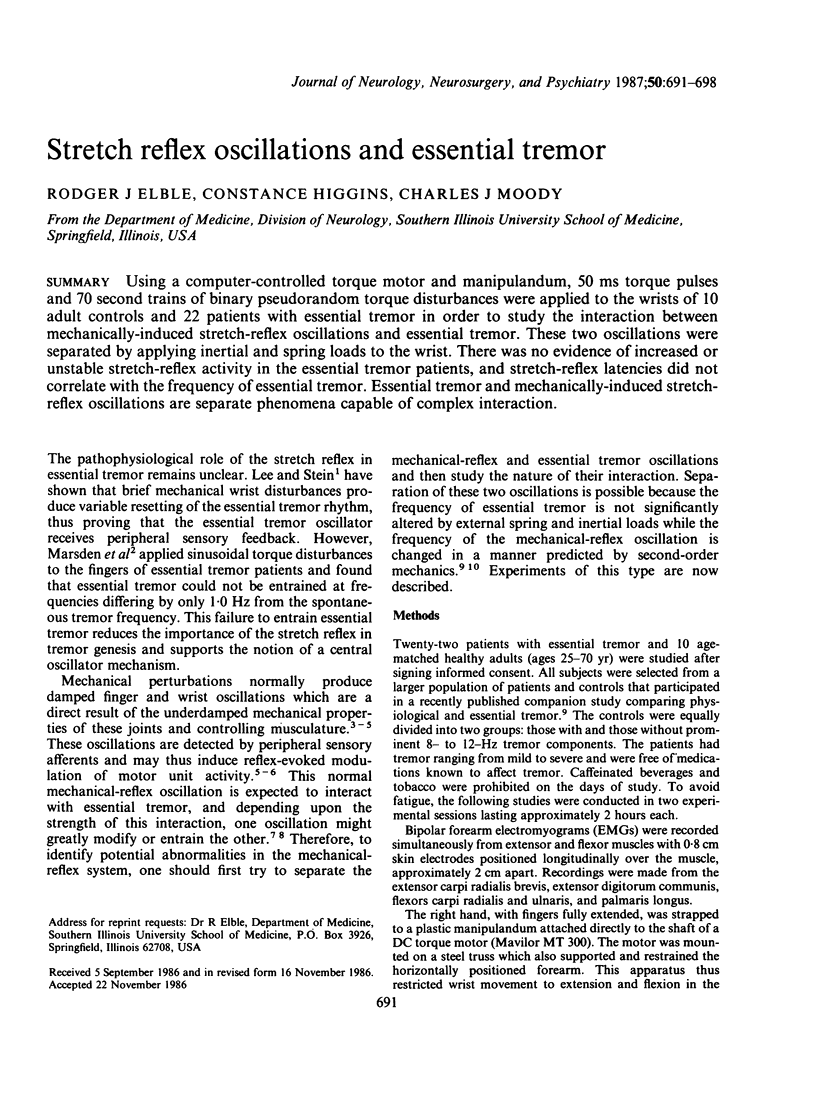
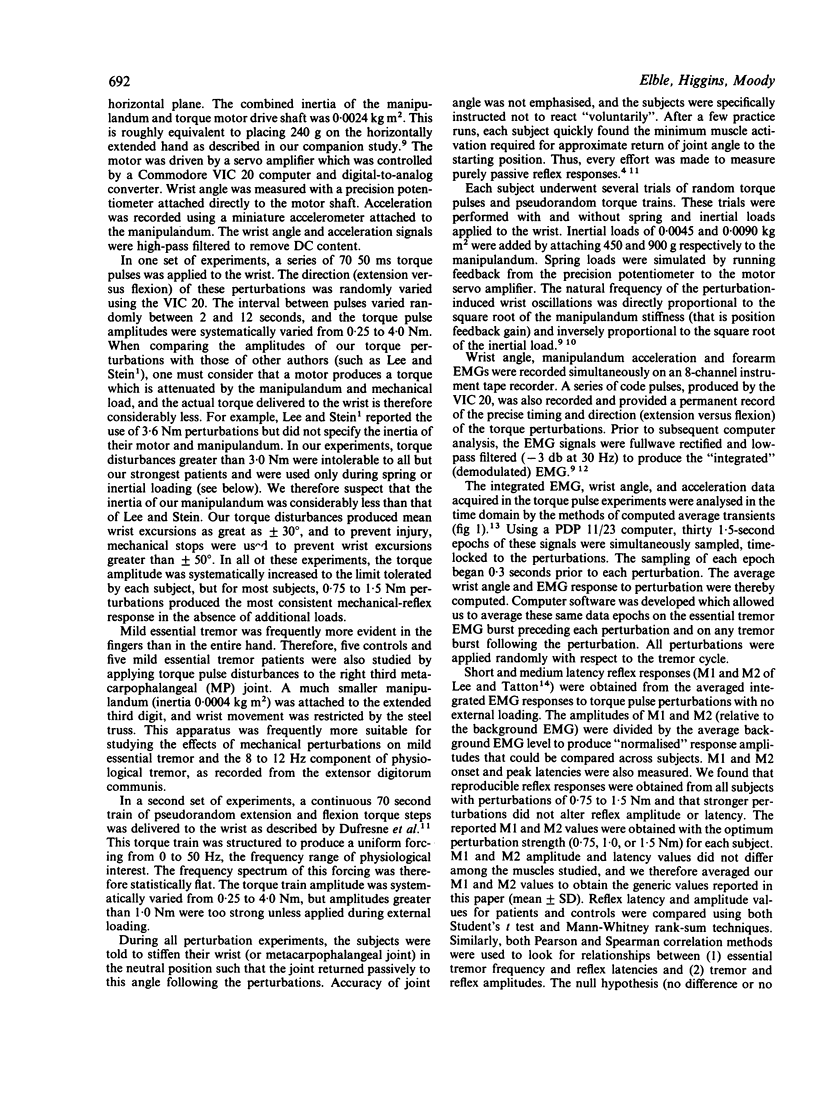
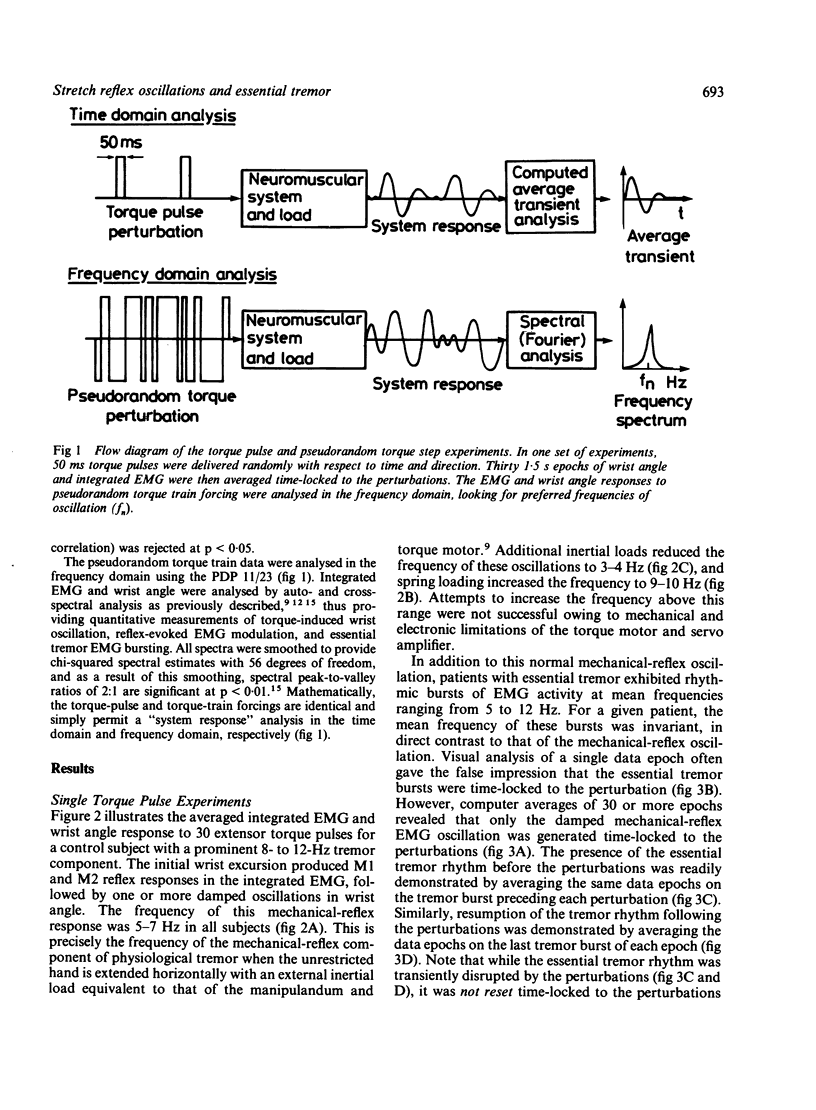
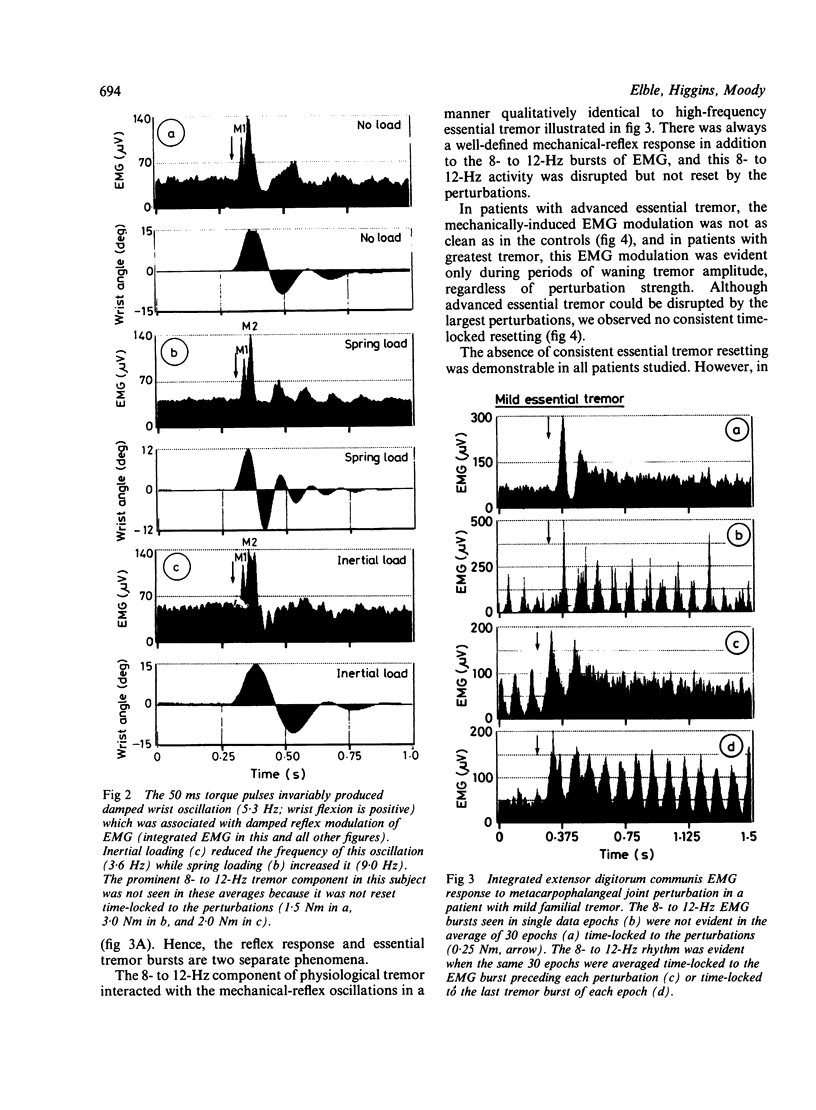
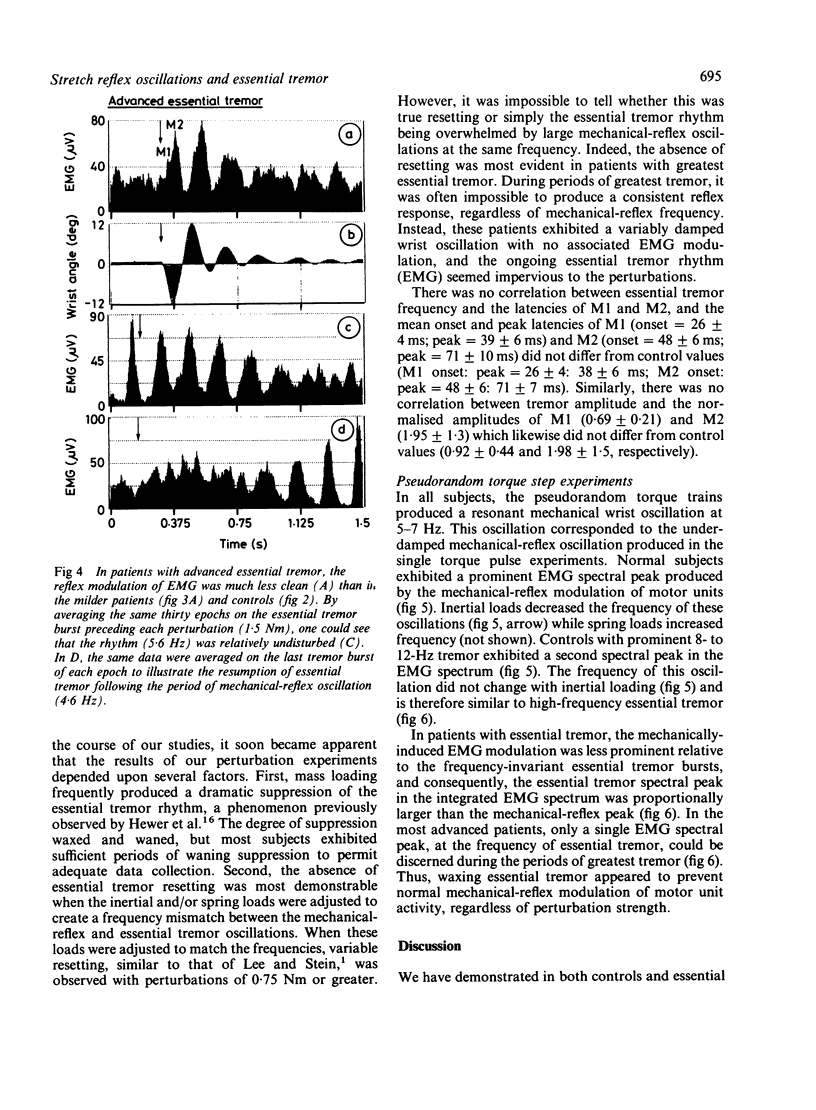
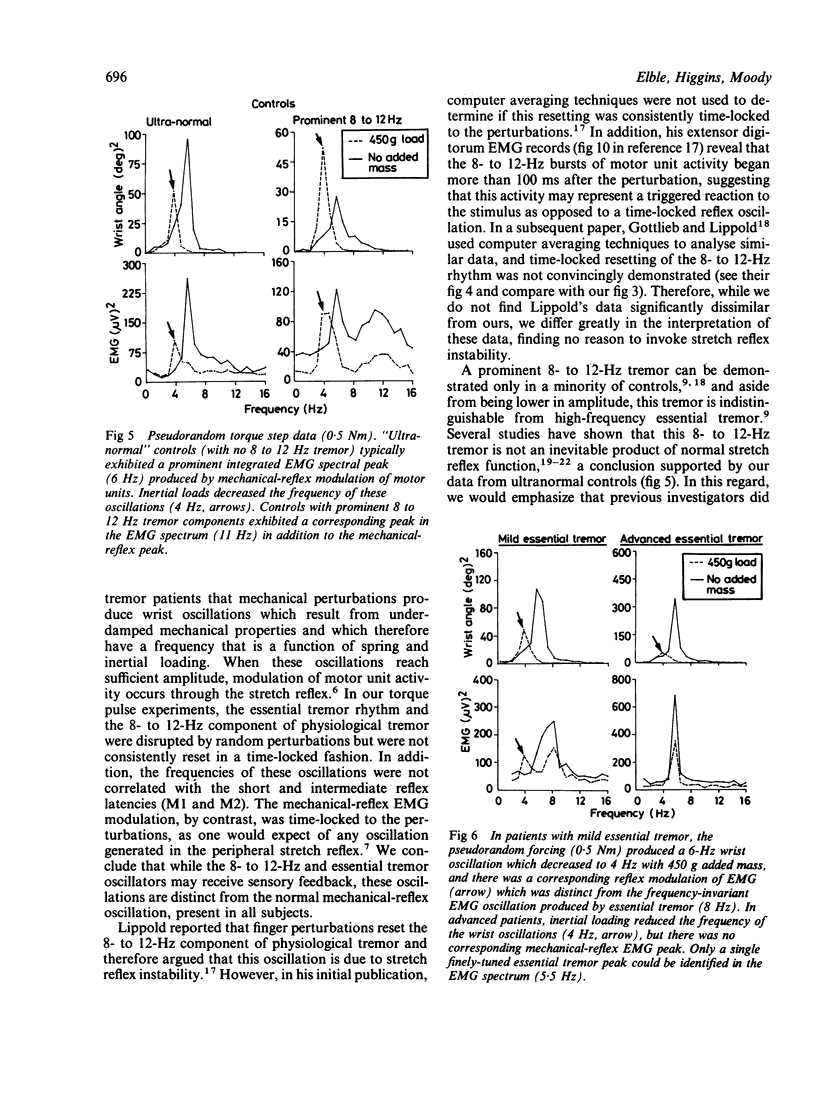
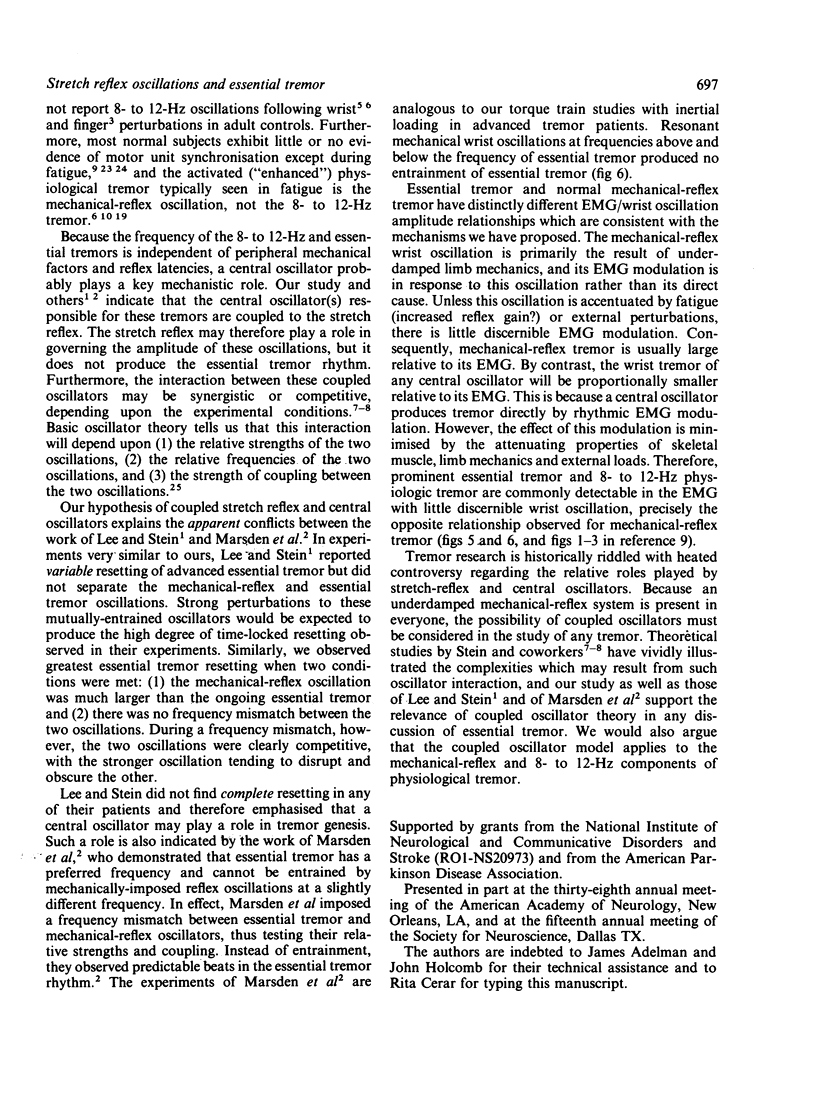
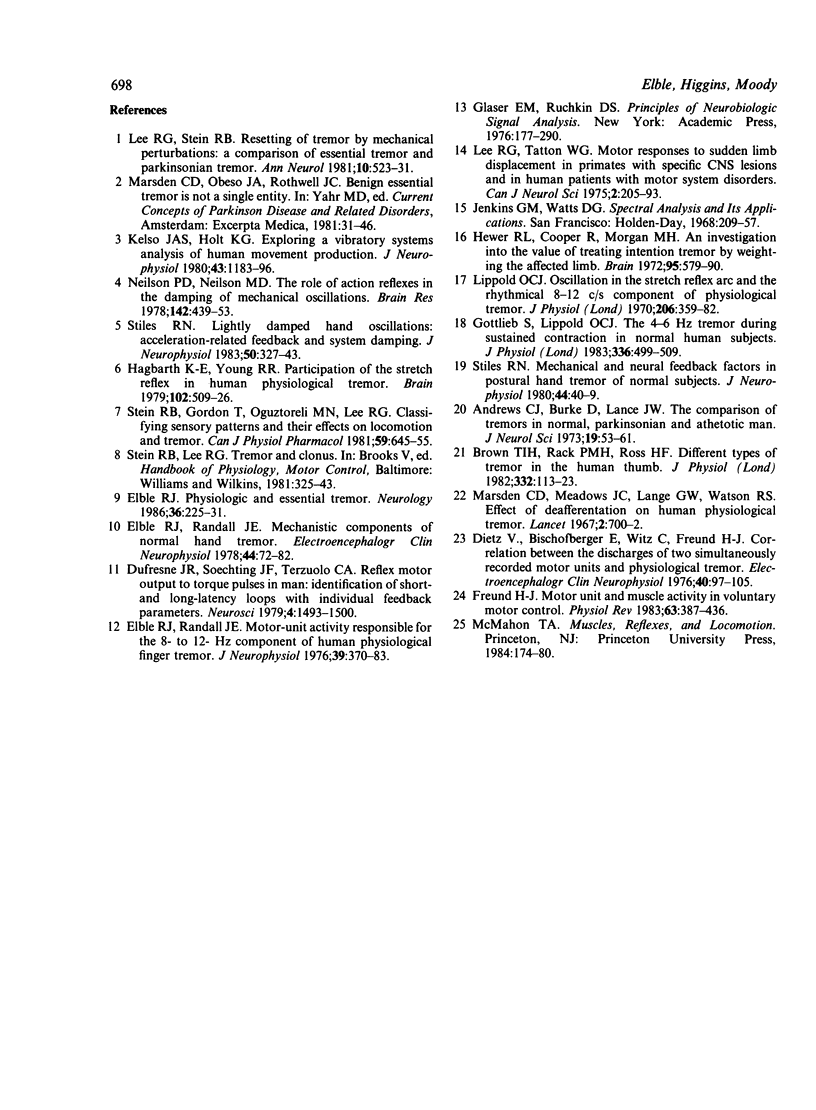
Selected References
These references are in PubMed. This may not be the complete list of references from this article.
- Andrews C. J., Burke D., Lance J. W. The comparison of tremors in normal, Parkinsonian and athetotic man. J Neurol Sci. 1973 May;19(1):53–61. doi: 10.1016/0022-510x(73)90056-7. [DOI] [PubMed] [Google Scholar]
- Dietz V., Bischofberger E., Wita C., Freund H. J. Correlation between the dischanges of two simultaneously recorded motor units and physiological tremor. Electroencephalogr Clin Neurophysiol. 1976 Jan;40(1):97–105. doi: 10.1016/0013-4694(76)90183-8. [DOI] [PubMed] [Google Scholar]
- Duclaux R., Kenshalo D. R., Sr Response characteristics of cutaneous warm receptors in the monkey. J Neurophysiol. 1980 Jan;43(1):1–15. doi: 10.1152/jn.1980.43.1.1. [DOI] [PubMed] [Google Scholar]
- Dufresne J. R., Soechting J. F., Terzuolo C. A. Reflex motor output to torque pulses in man: identification of short- and long-latency loops with individual feedback parameters. Neuroscience. 1979;4(10):1493–1500. doi: 10.1016/0306-4522(79)90054-x. [DOI] [PubMed] [Google Scholar]
- Elble R. J. Physiologic and essential tremor. Neurology. 1986 Feb;36(2):225–231. doi: 10.1212/wnl.36.2.225. [DOI] [PubMed] [Google Scholar]
- Elble R. J., Randall J. E. Mechanistic components of normal hand tremor. Electroencephalogr Clin Neurophysiol. 1978 Jan;44(1):72–82. doi: 10.1016/0013-4694(78)90106-2. [DOI] [PubMed] [Google Scholar]
- Elble R. J., Randall J. E. Motor-unit activity responsible for 8- to 12-Hz component of human physiological finger tremor. J Neurophysiol. 1976 Mar;39(2):370–383. doi: 10.1152/jn.1976.39.2.370. [DOI] [PubMed] [Google Scholar]
- Freund H. J. Motor unit and muscle activity in voluntary motor control. Physiol Rev. 1983 Apr;63(2):387–436. doi: 10.1152/physrev.1983.63.2.387. [DOI] [PubMed] [Google Scholar]
- Gottlieb S., Lippold O. C. The 4-6 HZ tremor during sustained contraction in normal human subjects. J Physiol. 1983 Mar;336:499–509. doi: 10.1113/jphysiol.1983.sp014594. [DOI] [PMC free article] [PubMed] [Google Scholar]
- Hagbarth K. E., Young R. R. Participation of the stretch reflex in human physiological tremor. Brain. 1979 Sep;102(3):509–526. doi: 10.1093/brain/102.3.509. [DOI] [PubMed] [Google Scholar]
- Hewer R. L., Cooper R., Morgan M. H. An investigation into the value of treating intention tremor by weighting the affected limb. Brain. 1972;95(3):579–590. doi: 10.1093/brain/95.3.579. [DOI] [PubMed] [Google Scholar]
- Lee R. G., Stein R. B. Resetting of tremor by mechanical perturbations: a comparison of essential tremor and parkinsonian tremor. Ann Neurol. 1981 Dec;10(6):523–531. doi: 10.1002/ana.410100606. [DOI] [PubMed] [Google Scholar]
- Lippold O. C. Oscillation in the stretch reflex arc and the origin of the rhythmical, 8-12 C-S component of physiological tremor. J Physiol. 1970 Feb;206(2):359–382. doi: 10.1113/jphysiol.1970.sp009018. [DOI] [PMC free article] [PubMed] [Google Scholar]
- Loeschcke H. H. Central chemosensitivity and the reaction theory. J Physiol. 1982 Nov;332:1–24. doi: 10.1113/jphysiol.1982.sp014397. [DOI] [PMC free article] [PubMed] [Google Scholar]
- Marsden C. D., Meadows J. C., Lange G. W., Watson R. S. Effect of deafferentation on human physiological tremor. Lancet. 1967 Sep 30;2(7518):700–702. doi: 10.1016/s0140-6736(67)90977-4. [DOI] [PubMed] [Google Scholar]
- Neilson P. D., Neilson M. D. The role of action reflexes in the damping of mechanical oscillations. Brain Res. 1978 Mar 10;142(3):439–453. doi: 10.1016/0006-8993(78)90907-1. [DOI] [PubMed] [Google Scholar]
- Stein R. B., Gordon T., Oğuztöreli M. N., Lee R. G. Classifying sensory patterns and their effects on locomotion and tremor. Can J Physiol Pharmacol. 1981 Jul;59(7):645–655. doi: 10.1139/y81-099. [DOI] [PubMed] [Google Scholar]
- Stiles R. N. Lightly damped hand oscillations: acceleration-related feedback and system damping. J Neurophysiol. 1983 Aug;50(2):327–343. doi: 10.1152/jn.1983.50.2.327. [DOI] [PubMed] [Google Scholar]
- Stiles R. N. Mechanical and neural feedback factors in postural hand tremor of normal subjects. J Neurophysiol. 1980 Jul;44(1):40–59. doi: 10.1152/jn.1980.44.1.40. [DOI] [PubMed] [Google Scholar]


